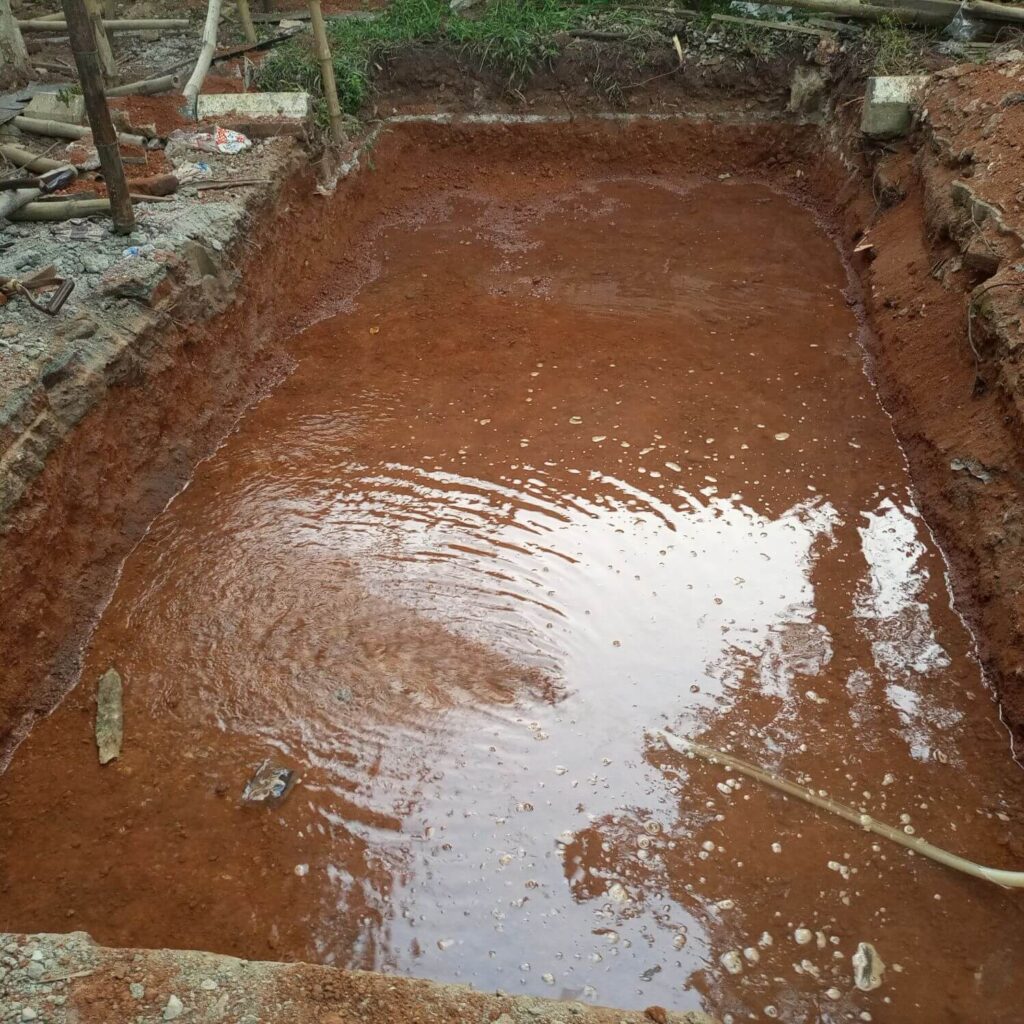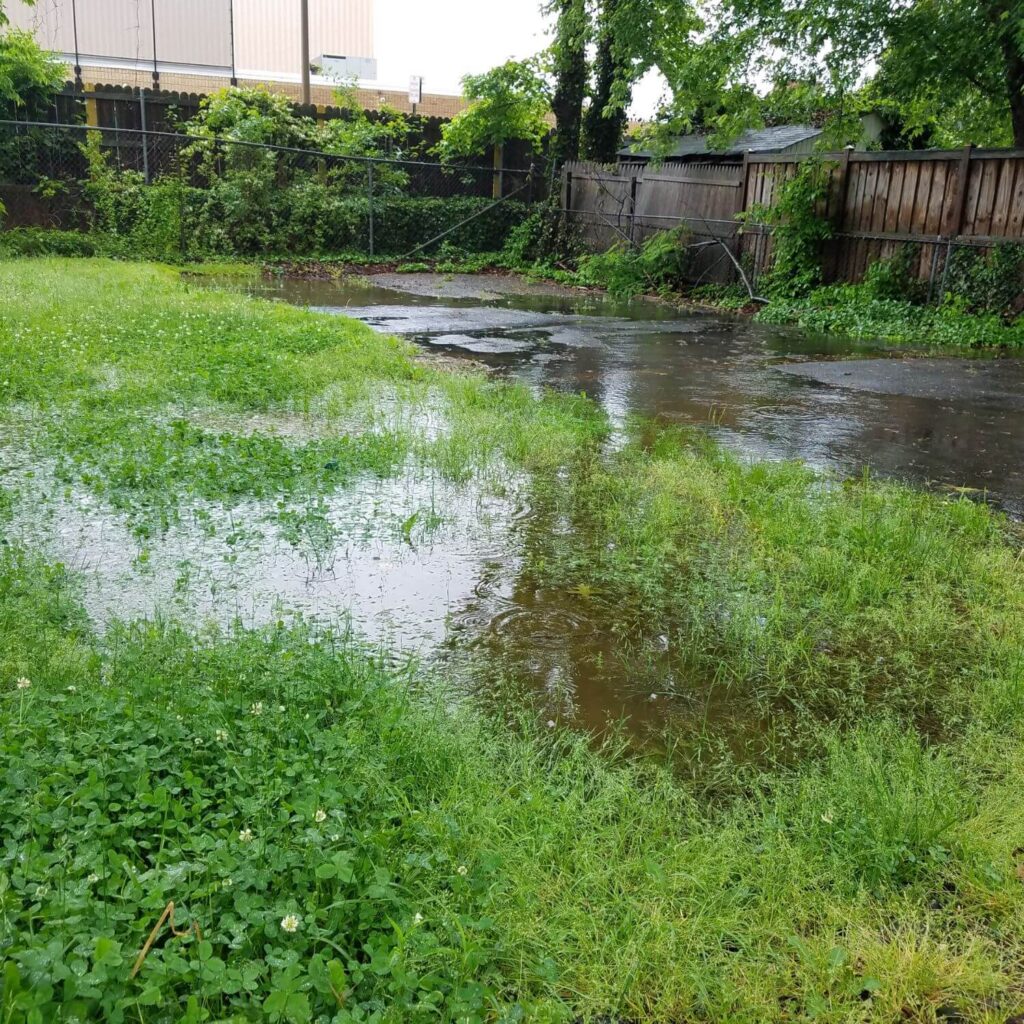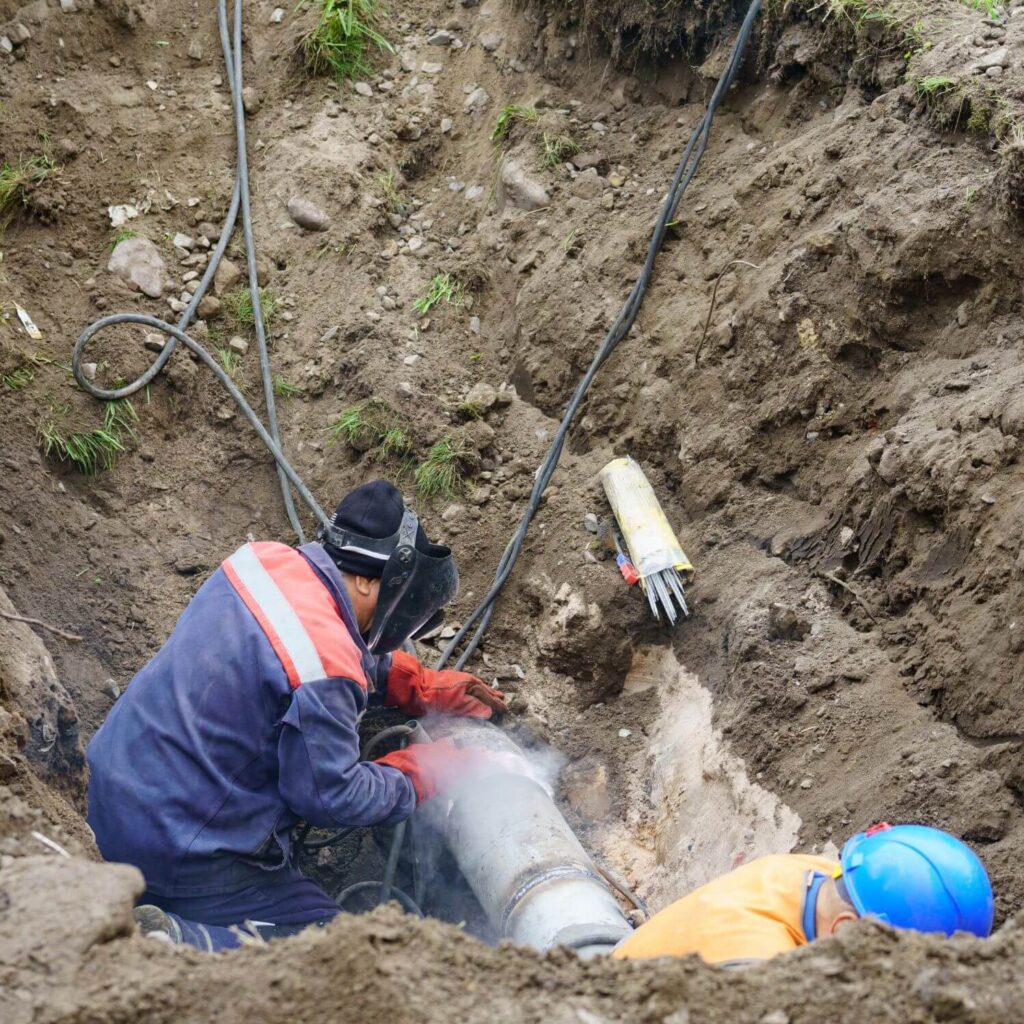
Have you ever wondered the purpose of those shallow holes in your backyard that seem to disappear into the ground? These are called soakaways, and they play a crucial role in managing rainwater. A soakaway acts as a natural drainage system, allowing excess water to seep into the ground, preventing flooding and the buildup of stagnant water. This simple yet effective solution is not only eco-friendly but also cost-effective. In this article, we will explore the benefits of soakaways and why they are a great addition to any property.
What is a Soakaway?
A soakaway, also known as an infiltration system or a soak pit, is a drainage system designed to manage and disperse excess rainwater or surface water runoff. It is an underground construction that allows for the infiltration of water into the surrounding soil, preventing waterlogging and reducing the risk of flooding. Soakaways are commonly used in both residential and commercial properties to handle stormwater runoff efficiently.
Definition
A soakaway is a structure that consists of a large hole or a trench filled with coarse gravel or rubble. This hole or trench is specifically designed to collect and hold excess water, allowing it to infiltrate slowly into the ground. It acts as an underground reservoir, providing a controlled and sustainable way to manage stormwater.
Purpose
The primary purpose of a soakaway is to prevent waterlogging and to control the volume and flow of water accumulated during heavy rainfall. By allowing rainwater to be absorbed into the ground, a soakaway helps to recharge groundwater supplies and reduce the pressure on external drainage systems.
Components
A typical soakaway consists of three main components:
- Inlet: This is the point where water enters the soakaway system. The inlet is usually a pipe or a channel that directs the excess water from the surface to the soakaway.
- Storage Chamber: This is the core of the soakaway. It is a void or a chamber filled with coarse aggregates, such as gravel, crushed stone, or rubble. The storage chamber holds the excess water until it can be naturally absorbed into the surrounding soil.
- Outlet: The outlet allows any remaining water to drain from the soakaway and disperse into the ground, preventing the system from becoming overwhelmed.
Design and Installation
Proper design and installation are crucial for the successful implementation of a soakaway system. Several factors need to be considered during the design and installation process to ensure its effectiveness.
Site Evaluation
Before designing a soakaway, a thorough site evaluation is necessary. Factors such as soil conditions, groundwater levels, and the proximity of neighboring structures and water bodies need to be assessed. This evaluation helps determine the size and suitability of the soakaway for the specific location.
Sizing the Soakaway
The size of the soakaway depends on the surface area from which excess water needs to be collected. The volume and intensity of rainfall in the area are also crucial factors. An appropriately-sized soakaway ensures that it can accommodate the expected flow of water and prevent overflow or failure during heavy rainfall events.
Construction Materials
The construction materials used for a soakaway are an essential consideration. Coarse aggregates, such as gravel or crushed stone, are commonly used to fill the soakaway chamber. These materials provide small voids for water storage while allowing for efficient infiltration into the surrounding soil.
Installation Process
The installation process of a soakaway involves digging a large hole or trench at the designated location. The chamber is then filled with the selected aggregates. Proper compaction and leveling of the aggregates are necessary to ensure uniform water infiltration. The inlet and outlet pipes or channels are then connected to the soakaway, directing water into and out of the system. Finally, the surrounding area is restored, ensuring minimal disruption to the landscape.

Types of Soakaways
Soakaways can be classified into three main types based on their design and structure. Understanding the different types can help determine the most suitable option for a specific application.
Traditional Soakaways
Traditional soakaways, also known as infiltration pits or soak pits, are the most common and straightforward type of soakaway. These are excavated holes filled with coarse aggregates. The water enters the soakaway through the inlet pipe, is stored in the chamber, and gradually infiltrates into the surrounding soil. Traditional soakaways are cost-effective and relatively easy to install.
Modular Soakaways
Modular soakaways are a more advanced and versatile option. These systems consist of precast modular units that are assembled to create an underground storage chamber. The modular design allows for easy customization and scalability, making them suitable for both residential and commercial applications. Modular soakaways provide a higher storage capacity and can handle larger volumes of water.
Infiltration Basins
Infiltration basins, also known as swales or rain gardens, are a type of soakaway that combines aesthetic appeal with stormwater management. These are shallow depressions filled with vegetation and permeable soil, allowing for natural filtration and infiltration of water. Infiltration basins not only control stormwater but also provide an attractive landscape feature and promote biodiversity.
Benefits of Soakaways
Soakaways offer several benefits, making them a popular choice for managing stormwater runoff. The following are some of the key advantages of using a soakaway system.
Environmental Benefits
One of the most significant environmental benefits of soakaways is their ability to recharge groundwater supplies. By allowing rainwater to infiltrate into the ground, soakaways help replenish the natural water table, supporting healthy plant growth and ensuring the sustainability of water resources. Soakaways also reduce the burden on external drainage systems, minimizing the risk of overflows and pollution of water bodies.
Cost-Efficiency
Soakaways are a cost-effective solution for managing stormwater. Traditional soakaways require minimal materials and relatively simple construction methods, resulting in lower installation costs compared to other stormwater management systems. Additionally, soakaways reduce the load on drainage infrastructure, potentially reducing the need for larger, more expensive drainage installations.
Reduced Flooding Risks
By efficiently managing stormwater runoff, soakaways help reduce the risk of flooding. Excess water is stored and slowly infiltrated into the ground, preventing it from overwhelming local drainage systems and causing localized flooding. This is particularly important in urban areas where the increase in impermeable surfaces can lead to rapid and uncontrolled runoff.

Maintenance and Longevity
Proper maintenance is essential for the long-term functionality and longevity of a soakaway system. Regular inspection, cleaning, and addressing any issues promptly can ensure optimal performance and prevent potential problems.
Regular Inspection
Regular inspection of the soakaway system is necessary to identify any signs of damage or blockage. Inspecting the inlet and outlet pipes, as well as the storage chamber, can help detect any issues early on. Signs of a deteriorating soakaway may include standing water around the system, unusual odors, or a decline in its performance.
Cleaning and Clearing Debris
Maintaining a clear path for water to enter and exit the soakaway is crucial. Regular cleaning of the inlet and outlet pipes, as well as the surrounding area, will prevent debris and sediments from obstructing the system. Accumulated debris can reduce the system’s capacity and affect its overall effectiveness.
Addressing Any Issues
If any issues are identified during inspection or cleaning, it is important to address them promptly. This may involve repairing damaged pipes or restoring the proper flow of water. Neglecting to address issues can lead to further damage and compromise the functionality of the soakaway system.
Common Soakaway Problems
Despite their effectiveness, soakaway systems can experience certain problems that may require attention. Being aware of these common issues can ensure timely intervention and proper resolution.
Blockages and Clogging
Blockages and clogging are common issues in soakaway systems. Accumulated sediments, debris, or plant growth can obstruct the inlet or outlet pipes, reducing the system’s ability to collect and infiltrate water. Regular cleaning and clearing of these obstructions can help prevent blockages and maintain the system’s functionality.
Insufficient Drainage
An undersized or poorly designed soakaway may not be able to handle the flow of water during heavy rainfall events. This can result in the system becoming overwhelmed, leading to standing water and potential flooding. Proper sizing and design, based on site-specific factors, are crucial to ensure sufficient drainage capacity.
Damage to Components
Over time, the components of a soakaway system can suffer wear and tear, leading to damage or failure. Cracked or broken pipes, collapsing chamber walls, or subsidence in the surrounding area can undermine the functionality of the system. Regular inspection and timely repairs can help prevent further damage and extend the lifespan of the soakaway.
To ensure the optimal functionality of a soakaway system, the following tips should be considered during installation and maintenance:

Proper Landscaping and Sloping
Proper landscaping and sloping of the surrounding area are crucial for the efficient functioning of a soakaway system. Ensure that the ground slopes away from the soakaway, directing water towards it. Avoid planting deep-rooted trees or shrubs near the soakaway, as their roots can damage the system over time.
Avoiding Contaminants
Avoid introducing contaminants into the soakaway system, as they can compromise its effectiveness and pose a risk to the environment. These contaminants can include oil, chemicals, and non-biodegradable materials. The proper disposal of waste and regular inspection of the system can help prevent contamination.
Regular Maintenance
Regular maintenance is key to ensuring the long-term functionality of a soakaway system. Implement a maintenance schedule that includes inspections, cleaning, and addressing any issues promptly. Keep a record of maintenance activities to track the system’s performance and identify any recurring problems.
Soakaways and Sustainable Drainage Systems (SuDS)
Soakaways play a vital role in sustainable drainage systems (SuDS). SuDS are a holistic approach to managing stormwater, aiming to mimic natural processes and reduce the impact of urban development on the water cycle. Soakaways are an essential component of SuDS, providing a natural and sustainable way to manage stormwater runoff.
SuDS Overview
SuDS promote the infiltration, attenuation, and treatment of stormwater through a range of techniques and features. These techniques include permeable surfaces, green roofs, rain gardens, and, of course, soakaways. By incorporating SuDS into development, the negative impacts of urbanization, such as increased flooding and pollution, can be minimized.
Soakaways as a SuDS Technique
Soakaways are considered a key SuDS technique due to their ability to collect and infiltrate excess water into the ground. They help mimic the natural water cycle and reduce the strain on conventional drainage systems. By incorporating soakaways into SuDS designs, developers can both manage stormwater efficiently and create sustainable and environmentally-friendly spaces.
Regulations and Guidelines
Regulations and guidelines regarding the implementation of SuDS and soakaways vary depending on the location. It’s important to consult local authorities and adhere to any relevant regulations when designing and installing soakaway systems. Compliance with these regulations ensures that the system meets the necessary standards and contributes to sustainable development.
Alternative Options to Soakaways
While soakaways are an effective and widely-used method for managing stormwater runoff, there are alternative options available that may be more suitable for certain applications. These alternatives provide additional benefits and can be considered based on specific needs and site conditions.
Rainwater Harvesting
Rainwater harvesting involves collecting and storing rainwater for various uses, such as irrigation, toilet flushing, or laundry. This alternative option helps conserve water resources and reduce the demand on mains water supplies. Rainwater can be collected from rooftops and stored in tanks or cisterns, reducing the reliance on soakaways for stormwater management.
Green Roofs
Green roofs, also known as living roofs or vegetated roofs, are another alternative to traditional stormwater management methods. These roofs are covered with vegetation, which helps absorb and retain rainwater, reducing the amount of runoff. Green roofs provide insulation, improve air quality, and contribute to biodiversity, making them an attractive and sustainable option for managing stormwater.
Permeable Paving
Permeable paving is a sustainable alternative to traditional impervious surfaces, such as concrete or asphalt. Permeable surfaces allow rainwater to infiltrate into the ground, reducing the amount of runoff generated. This not only helps manage stormwater but also prevents the transportation of pollutants into water bodies. Permeable paving can be used for driveways, sidewalks, and parking lots, offering an aesthetically pleasing and eco-friendly solution.
Conclusion
Soakaways are a vital component of stormwater management systems, offering numerous benefits and contributing to sustainable development. These underground structures effectively handle excess water, prevent flooding, and recharge groundwater supplies. Proper design, installation, and maintenance are crucial for ensuring their functionality and longevity. Soakaways integrate well with sustainable drainage systems and can be complemented by alternative options such as rainwater harvesting, green roofs, and permeable paving. By adopting these techniques, we can create resilient and environmentally-friendly communities while efficiently managing stormwater. So, whether you’re considering installing a soakaway or exploring alternative options, remember the importance of proper design and maintenance in achieving effective and sustainable stormwater management.
Read Flood Protection Sandbags Review

